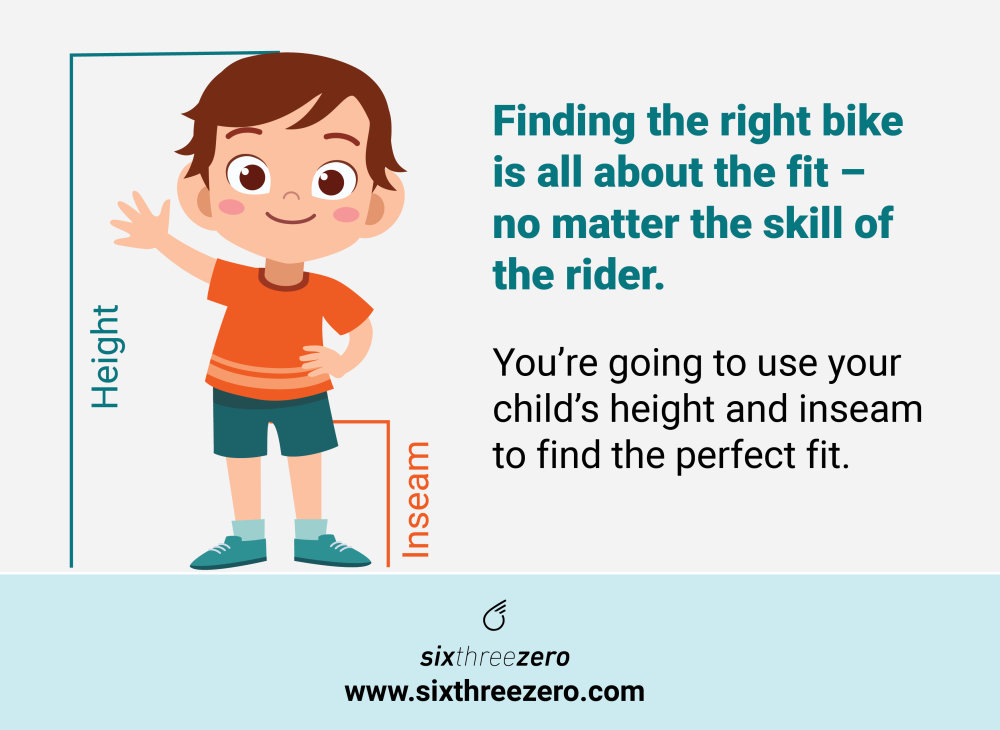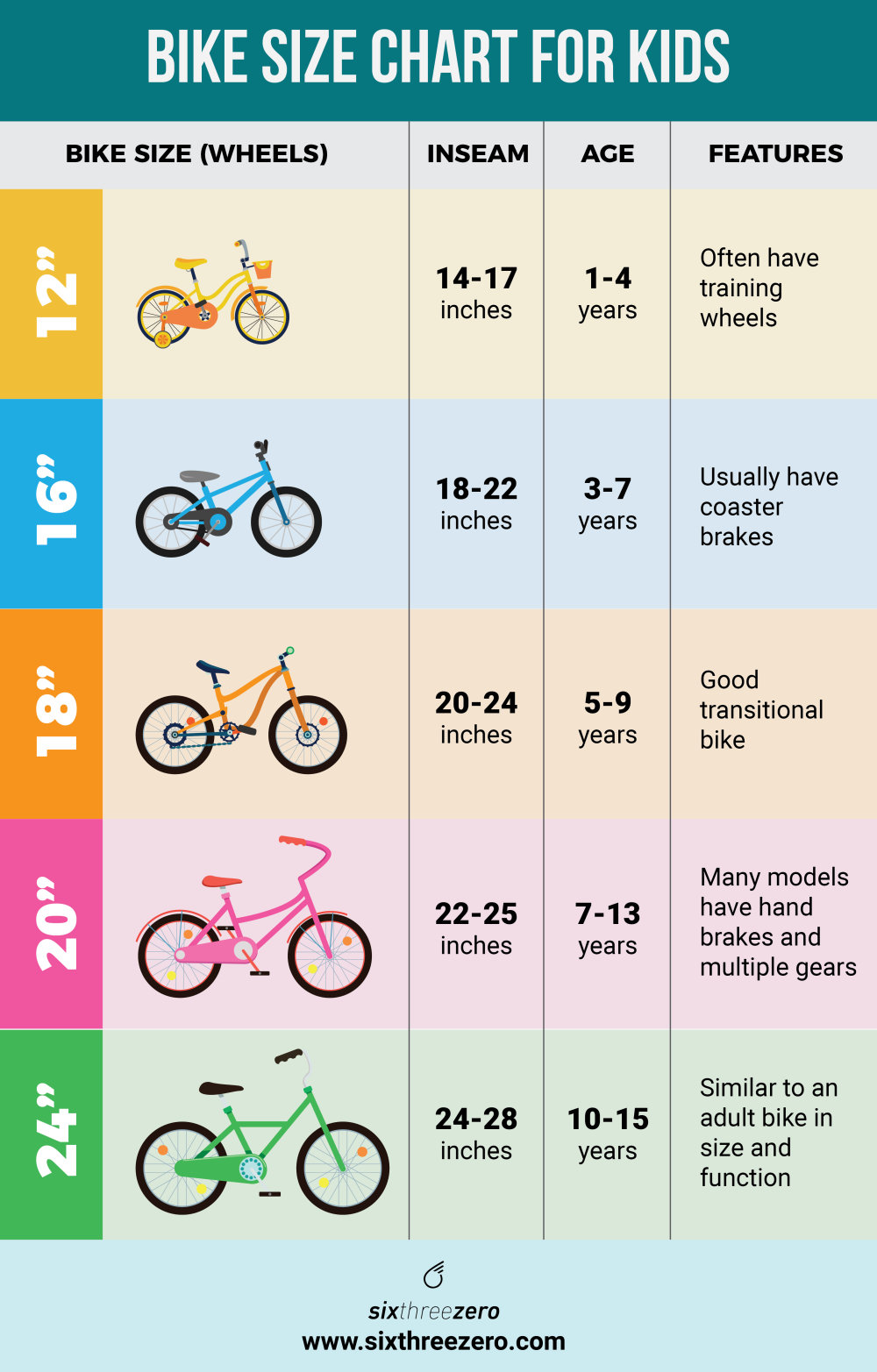E-Bikes & Bikes Customised to You
Kids’ Bike Sizing Chart: Find The Best Child Bicycle By Height, Weight & Age
Jeremy Pollack
Updated On: April 13, 2023
Finding the right bike is all about the fit – no matter the skill of the rider. For novice riders, however, it’s even more important to choose the right set of wheels. If you teach a child to ride on an ill-fitting bicycle, it could lead to frustration or injury. So, how do you make sure you’re buying the right bike for your new rider? Let’s look at how kids’ bikes are sized (spoiler: it’s not the same as adult bikes), and how to know when the fit is right.
Understanding Kids’ Bike Sizing
If you look at a kids’ bike size chart and try to understand it in adult bike terms, you might be confused. Adult bikes tend to be advertised by the top tube length, which is a part of the frame. When it comes to kid’s bikes, however, the measurements represent the tire size. So, a 12” bike is a bicycle with 1-foot diameter tires.
With that out of the way, you should also consider your child’s unique body before you review a size chart. Keep in mind that the recommendations are averages. If your child is in the 98th percentile for height – you may want to go up a size or make sure the seat can be adjusted significantly before you make a purchase.
Breaking Down Height Requirements
The primary consideration for which bike your kid needs is her height. Many manufacturers will make their recommendations specifically based on your child’s inseam. This measurement determines how far the saddle needs to be from the ground for a comfortable ride. With that in mind, here is what the International Bike Fund has to say about bike sizes for kids:
12” Bikes: Inseam 14-17 inches, often have training wheels.
14” Bikes: Inseam 16-20 inches, often have training wheels.
16” Bikes: Inseam 18-22 inches, usually have coaster brakes.
18” Bikes: Inseam 20-24 inches, good transitional bike.
20” Bikes: Inseam 22-25 inches, many models have hand brakes and multiple gears.
24” Bikes: Inseam 24-28 inches, similar to an adult bike in size and function.
As you can see, there is some overlap between each category. The right fit for your child depends on factors like how quickly they grow and the level of difficulty they can handle. For instance, if your child has a 20” inseam, you could choose either a 14” or 16” bike. Your decision may come down to if they need the training wheels available with the smaller bike.
Considering Weight and Age
Your child’s weight and age will also play a factor in which size is the best fit. At sixthreezero, we use our Body Fit tool to recommend the best fit based on both height and weight. A heavier child may want or need a slightly bigger bike frame to accommodate their body; if they’re old enough, they may even want to advance to an adult bike.
Age is a consideration in terms of skill level and growth habits. A younger child who is caught between two sizes may want to stick with the smaller, simpler bike. On the other hand, if your child is on the upper side of a recommended age range, you may want to go up a size so they can use the bike for more than one summer. Here are some age recommendations from Schwinn Bikes:
12” Bikes: Ages 1-4
16” Bikes: Ages 3-7
18” Bikes: Ages 5-9
20” Bikes: Ages 7-13
24” Bikes: Ages 10-15
Knowing When It’s the Right Fit
A test ride is the best way to ensure your kid’s bike is the right size. Even if they’re not ready to ride unassisted, a quick journey in the driveway can reveal a lot. Here is what to look for in a well-fitting bike:
Feet Should Hit the Ground: When your child is seated, the balls of their feet should comfortably reach the ground. If they can’t touch the pavement, your young cyclist may not be able to stop reliably. A bike that’s too tall also makes getting on and off the bike more difficult.
No Knees Hitting the Handlebars: If your child’s knees hit the handlebars while they pedal, the bike is too small. This makes riding painful and even dangerous at times. On the other hand, hyperextended legs are a sign the bike is too big. The ideal bike size lets your child comfortably extend their legs fully while pedaling.
Easy to Lift and Move: A bike that weighs in at even a few pounds heavier than average could make it impossible for a kid to lift and maneuver their ride. Make sure the frame is lightweight enough to be picked up over a curb. Heavy bikes could also impede stopping or slowing.
Stradling Should Be Easy: If you have to tilt a bike at a weird angle for your child to mount it, it’s too big. Stepping over the middle of the bike to get on the seat should be a simple move. Likewise, they should be able to stand up on it with their feet on either side and have a 1-2” clearance beneath them.
Sorting through kids’ bike sizes is a bit tricky because kids keep growing and sometimes children could fall into multiple categories. That’s why determining how easy it is to ride the bike is perhaps the best indicator of success. After all, you don’t want to invest in a bike only to have it collect dust in the garage. At sixthreezero, our bikes for kids are designed for older kids on the move. Use our Body Fit tool to make sure our cruiser is a good choice and then start accessorizing! Adding a bell or more reflectors is never a bad idea.
Even young cyclists can benefit from being a part of a biking community. Find new places for the entire family to explore the road on their new bicycles! It’s easy, just join our Journey Club to uncover biking locations around the world and connect with other cyclists.
Fit











